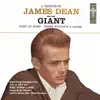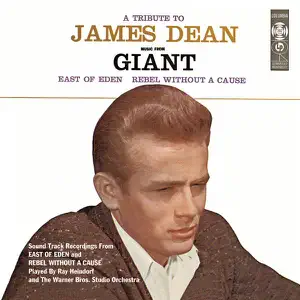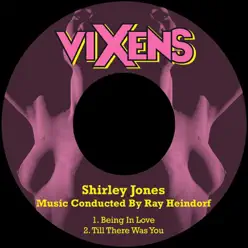


CIUDAD NATAL
Haverstraw, NY
NACIMIENTO
25 de agosto de 1908
Acerca de Ray Heindorf
Composer, conductor, and orchestrator Ray Heindorf worked prolifically in Hollywood from the start of the sound era of the movies in the late '20s to the end of the studio system in the late '50s. As the head of the music department at Warner Bros. Pictures for more than a decade, he helped provide music for hundreds of motion pictures, whether he composed the scores himself or oversaw the work of others. His creative endeavors brought him 18 Academy Award nominations and three Oscars. Although his primary responsibility was to the movies, and he was essentially a behind-the-scenes artist, nevertheless his work spilled over into the recording field, as he wrote popular songs that earned recordings, conducted the orchestras for soundtrack albums, and even released a handful of discs under his own name, some of these activities resulting in Top Ten hits.nnRay John Heindorf was born on August 25, 1908, in the Hudson River town of Haverstraw, NY. He took an early interest in both music and movies, and by the age of 14 was playing the piano to accompany the showing of silent films at a local theater. He attended the Troy Conservatory of Music. In October 1927, Warner Bros. launched the sound era by releasing the first feature film with sound, The Jazz Singer, starring Al Jolson. Soon, all the studios were turning out talkies, and composers were much needed. Heindorf headed west and was first employed by MGM, where he orchestrated Arthur Lange's score to The Hollywood Revue, released in August 1929, and appeared onscreen in the short subject The Song Writers' Revue, released in January 1930. That, however, turned out to be his only work in front of the camera and his last effort at MGM. Soon, he was working in the music department at Warner Bros., where he wrote the main title music and orchestrated Bernhard Kaun's score for Under Eighteen, released in December 1931. He composed the score for Crooner, released in August 1932, collaborated with Kaun on Big City Blues, released the following month, and scored Central Park, released in December.nnMovie musicals, which had enjoyed a vogue with the emergence of talkies, were less successful in the early '30s, but they made a big comeback when Warner Bros. released 42nd Street in March 1933, with its Harry Warren/Al Dubin song score, Busby Berkeley's geometric choreography, and Ruby Keeler's innocent charm. Heindorf served as arranger on the picture, also working on the follow-ups Gold Diggers of 1935 (1935), Gold Diggers of 1937 (1936), and Gold Diggers in Paris (1938) (for which he and Heinz Roemheld wrote the score). Although soundtrack albums did not exist in the 1930s, conductor John McGlinn re-created Heindorf's orchestrations on The Busby Berkeley Album, released by Angel Records in 1994. Heindorf remained a relatively minor figure in the Warner Bros. music department in the early '30s, however, getting occasional assignments to compose scores, usually in collaboration with others. He shared the scores of the 1934 films Desirable and A Lost Lady with Kaun and Roemheld, and while he earned sole composer credit for the score of Murder in the Clouds, released that December, Kaun wrote the main and end titles. This situation obtained for the rest of the '30s. Heindorf composed the scores for Captain Blood (1935) and Four's a Crowd (1938) by himself, but shared Broadway Hostess (1935), The Singing Kid (1936), Varsity Show (1937), Hollywood Hotel (1938), Naughty But Nice (1939), On Your Toes (1939), and The Roaring Twenties (1939) with Roemheld; Dangerous (1935) with Roemheld and Kaun; and Boy Meets Girl (1938) with Howard Jackson.nnHeindorf scored Knute Rockne, All American, released in October 1940, then collaborated with Roemheld on Blues in the Night, issued in December 1941. His and Roemfeld's next score marked a milestone in Heindorf's career when they handled Yankee Doodle Dandy, the film biography of Broadway star and songwriter George M. Cohan, starring James Cagney. The film, released in May 1942, was a major hit, earning eight Academy Award nominations, among them one for its music. At this time, there were two scoring awards, one for dramatic or comic pictures, the other for musicals, and Heindorf and Roemheld were nominated in the latter category, winning when the awards were announced on March 4, 1943. The award set a pattern for Heindorf's extensive recognition by the Academy in that it came for a musical film on which he had largely adapted the melodies written by Cohan for scoring purposes. Nearly all of his subsequent nominations would come on similar assignments.nnAnd those nominations came hot and heavy in the 1940s. In 1943, Heindorf was again given an Oscar nod -- and a second straight award -- for scoring the musical This Is the Army, based on the stage show with songs by Irving Berlin. In 1944, Heindorf earned a sole nomination for the all-star extravaganza Hollywood Canteen and shared a nomination with Louis Forbes for the RKO production Up in Arms (a loose remake of Whoopee!, based on the Broadway musical), starring Danny Kaye, but went home empty handed. Another RKO project with Kaye, Wonder Man, brought Heindorf his fifth Academy Award nomination (again shared with Forbes) in 1945, and his sixth came the same year, for Warner Bros.' George Gershwin film biography Rhapsody in Blue, this score co-composed with Max Steiner. In fact, Heindorf also had a third nomination in 1945, this one for best song. He and M.K. Jerome composed "Some Sunday Morning," with lyrics by Ted Koehler, for the Errol Flynn Western San Antonio, and even before that picture appeared in December 1945, it became a Top Ten hit for Helen Forrest, who recorded it for Decca. Unfortunately, none of Heindorf's 1945 nominations resulted in an Oscar, and he would do without a third statuette until near the end of his career. But his eighth nomination came in 1946, again shared with Steiner, for Night and Day, a film biography of Cole Porter, and in 1947, he and Steiner were nominated for My Wild Irish Rose, a film biography of yet another Broadway songwriter, Chauncey Olcott.nnHeindorf was put in charge of the Warner Bros. music department in 1947. In this capacity, he continued to compose scores, but he also had general responsibility for the music in all of the company's releases, and his film credit often was "musical director," a catchall that included a variety of duties from arranging and orchestrating to conducting and even adding musical cues to scores credited to other composers when revisions and retakes required it. He helped Warner Bros. launch a series of original movie musicals in the late '40s (often employing vintage songs with publishing rights owned by company) starting with April Showers (1948), for which he co-wrote the score with Steiner, and Romance on the High Seas (1948), which introduced former band singer Doris Day as a musical comedy star and which earned Heindorf his tenth Academy Award nomination. In 1949, he scored the Joan Crawford drama Flamingo Road; the film biography of Broadway star Marilyn Miller, Look for the Silver Lining (resulting in his 11th Oscar nomination); and the Doris Day musical It's a Great Feeling.nnThe decade of the 1950s was at least as busy for Heindorf as the '40s had been. He did scoring work for the 1950 films Backfire, Tea for Two (based on the Broadway musical No, No, Nanette), The Breaking Point, and The West Point Story, the last earning him his 12th Academy Award nomination. But perhaps his most notable music credit for the year came with the February release of Young Man with a Horn, a film about a troubled jazz trumpeter loosely based on Bix Beiderbecke that starred Kirk Douglas, whose playing was dubbed by Harry James, and Doris Day. Alex North composed the score, with Heindorf serving as musical director, but Heindorf also wrote a theme, "Melancholy Rhapsody," that was given a lyric by Sammy Cahn and, while not featured in the final film, was recorded on an album of the film's movie made by Day and James and released by Columbia Records. That album spent 12 weeks at number one in the charts. Heindorf's affinity for jazz was also emphasized by what was, at the time, a private event. On April 16, 1950, he hosted a party at his home at which jazz pianist Art Tatum played, and the performance was recorded. A similar evening was held five years later, on July 3, 1955, and eventually the recordings made their way to disc, with Heindorf credited as producer. Reissued as a two-CD set by Verve under the title 20th Century Piano Genius, the recordings reached number 12 in the jazz charts in 1996.nnHeindorf's scores for films released in 1951 included The Lullaby of Broadway, Goodbye, My Fancy, Come Fill the Cup, I'll See You in My Dreams (a screen biography of songwriter Gus Kahn starring Danny Thomas and Doris Day), and Starlift. Also, even more prominently than in 1950 with Young Man with a Horn, Heindorf gained recognition in the record racks. MGM Records had introduced the concept of the "original soundtrack" album in 1946 with Till the Clouds Roll By, and Columbia Records had introduced the 33 rpm "long-playing" (LP) record in 1948, at first primarily in a 10" format (with the 12" version becoming standard by the mid-'50s). With these innovations, albums containing recordings of the scores of motion pictures -- either taken directly from the film soundtracks or specially recorded -- began to become common. Among Heindorf's many assignments in 1951 was serving as musical director for A Streetcar Named Desire, the screen adaptation of the Tennessee Williams play starring Marlon Brando, released in September. Alex North composed the music, but Heindorf conducted the orchestra for the Capitol Records soundtrack album, and Capitol even released a single, "Four Deuces"/"Streetcar," credited to Heindorf, his first record release under his own name.nnHeindorf collaborated with other composers on his film scores of 1952, sharing About Face with David Buttolph, Where's Charley? and April in Paris with Howard Jackson, and Stop, You're Killing Me with Buttolph and Jackson. He also had a co-composing credit with Max Steiner on a remake of The Jazz Singer starring Danny Thomas, resulting in his 13th Oscar nomination. His 14th nomination came the following year for the Western musical Calamity Jane, starring Doris Day, and he also conducted the Columbia soundtrack album, which reached number two in the charts. One other score for the year, in collaboration with Howard Jackson, was Three Sailors and a Girl, and he also conducted the Capitol soundtrack for The Eddie Cantor Story and the RCA soundtrack for So This Is Love, the film biography of opera star Grace Moore, pictures for which he had served as musical director, as well as a Capitol LP called Music by Max Steiner. In 1954, he and Howard Jackson scored Lucky Me, but his most celebrated work for the year was on a remake of A Star Is Born starring Judy Garland, who was making her return to Hollywood after four years. The film, released in October, brought him his 15th Academy Award nomination, and he conducted the Columbia soundtrack album, which reached number four in the charts. Next up, early in 1955, was Young at Heart, a musical comedy starring Doris Day and Frank Sinatra, for which Heindorf composed "Till My Love Comes to Me" (lyrics by Paul Francis Webster) and, with Don Pippin, "Hold Me in Your Arms" (lyrics by Charles Henderson), songs sung by Day in the film and recorded by her for her Young at Heart Columbia LP, which reached number 11.nnHeindorf also collaborated with Howard Jackson on the score of Sincerely Yours in 1955, but he earned his greatest exposure beyond Hollywood that year with Pete Kelly's Blues, a crime drama set in the Prohibition Era and starring stone-faced Jack Webb of Dragnet fame. The film also featured Peggy Lee and Ella Fitzgerald, both of whom were contracted to Decca Records, while the soundtrack album was assigned to Columbia. As a result, Columbia credited the soundtrack to Heindorf (who composed the score with David Buttolph and conducted) with Matty Matlock, whose Dixieland band played the 1920s selections, while Decca issued a Songs from Pete Kelly's Blues LP credited to Lee and Fitzgerald, including the song "Pete Kelly's Blues," composed by Heindorf with lyrics by Sammy Cahn. Both albums made the Top Ten. Heindorf's next composing job also resulted in competing albums. He scored Serenade, released in 1956, starring Mario Lanza, who was contracted to RCA Victor Records, and he conducted the orchestra on RCA's Serenade album, credited to Lanza, which reached the Top Ten. But Columbia also released an instrumental album of the film's music credited to Ray Heindorf and His Orchestra. That didn't keep RCA from hiring him to conduct its soundtrack album of Alex North's score for The Bad Seed in the fall of the year, however. And at the end of 1956, he conducted Capitol Records' soundtrack for Dimitri Tiomkin's score to Giant, featuring a posthumous screen appearance by James Dean, then continued his association with the legendary actor by issuing A Tribute to James Dean, another Ray Heindorf album for Columbia, in 1957, the same year he conducted Kenyon Hopkins' score for Baby Doll on a Columbia LP. Heindorf's two major scoring efforts for 1957 also produced soundtrack albums: a screen adaptation of the Broadway musical The Pajama Game (composed with Howard Jackson) starring Doris Day that produced a Top Ten Columbia album and The Helen Morgan Story, a film biography of the Broadway star with Ann Blyth (dubbed by Gogi Grant), resulting in an RCA album that reached the charts.nnHeindorf's composing credits for 1958 included No Time for Sergeants (with David Buttolph), Home Before Dark, and an adaptation of the Broadway musical Damn Yankees that brought him his 16th Oscar nomination and a conducting credit on the charting RCA soundtrack album. He also conducted the RCA soundtrack album for Max Steiner's score to Marjorie Morningstar, for which he had served as musical director, and the Mercury Records soundtrack to the Diana Barrymore film biography Too Much, Too Soon, with a score by Ernest Gold. Increasingly, while continuing to head the Warner Bros. music department, Heindorf had moonlighted on recording projects. But in 1958, Warner Bros. finally launched its own record label, and the Ray Heindorf Orchestra was its first recording artist, releasing a newly made recording of Victor Young's score for the 1943 film For Whom the Bell Tolls as the first LP issued by the new imprint, followed later in 1958 by the Heindorf Orchestra's version of Spellbound, the score of the 1945 film composed by Miklos Rozsa. Heindorf's next Warner Bros. Records LP was Auntie Mame, based on Bronislau Kaper's score for the 1958 film for which he had served as musical director; it was released in 1959, along with the Heindorf Orchestra's treatment of the Gershwin classics "Rhapsody in Blue" and "An American in Paris" on a single LP. Heindorf also composed two film scores for 1959, Up Periscope and --30-, but with the studio system in decline Warner Bros. no longer could afford a full-scale music department, and Heindorf left the company at the end of the year.nnAlthough he was only 51 years old, Heindorf semi-retired at the end of his tenure at Warner Bros., returning to action for only a few select projects. In May 1960, he conducted a television special, The Frances Langford Show, that resulted in an album released by Chanford Records. In 1962, he returned to Warner Bros. to supervise the screen version of the Broadway musical The Music Man, conducting the resulting soundtrack album, which hit number two in the charts and went gold, and earning his 17th Academy Award nomination in the newly created category Scoring of Music -- Adaptation or Treatment. He became the first winner in that category, collecting his third Oscar from presenter Ginger Rogers on April 8, 1963. In 1964, he released the album Top Film Themes, '64 on Warner Bros. Records. He returned to the studio again in 1968 to handle the movie version of the Broadway musical Finian's Rainbow, starring Fred Astaire and Petula Clark, again resulting in a charting soundtrack album and an Academy Award nomination for best adapted score, although this time he lost to the year's big winner, Oliver! He composed the score for an episode of the TV series O'Hara, United States Treasury in 1971, and in 1972 reunited with former Warner Bros. president Jack L. Warner, by now an independent producer, for his last project, the film version of the Broadway musical 1776, serving as musical director and conducting the soundtrack album released by Columbia. Then he retired completely. He died in Tarzana, CA, on February 3, 1980, at age 71, survived by three children and four grandchildren. ~ William Ruhlmann
Discografía de Ray Heindorf
13 discos
![Vintage Hollywood Classics, Vol. 33: A Time to Love and a Time to Die & a Streetcare Named Desire (Original Soundtracks) [Remastered 2017] - Ray Heindorf Vintage Hollywood Classics, Vol. 33: A Time to Love and a Time to Die & a Streetcare Named Desire (Original Soundtracks) [Remastered 2017] - Ray Heindorf](https://is4-ssl.mzstatic.com/image/thumb/Music128/v4/00/cd/c1/00cdc144-9954-c9b4-5c51-fbfe077854a4/4040741030740.jpg/248x248cc.webp)
Vintage Hollywood Classics, Vol. 33: A Time to Love and a Time to Die & a Streetcare Named Desire (Original Soundtracks) [Remastered 2017]
2017

Being in Love - Single
2016

For Whom the Bell Tolls (1958 Film Score)
2015
Ver todos los discos
Nosotros
Notas
